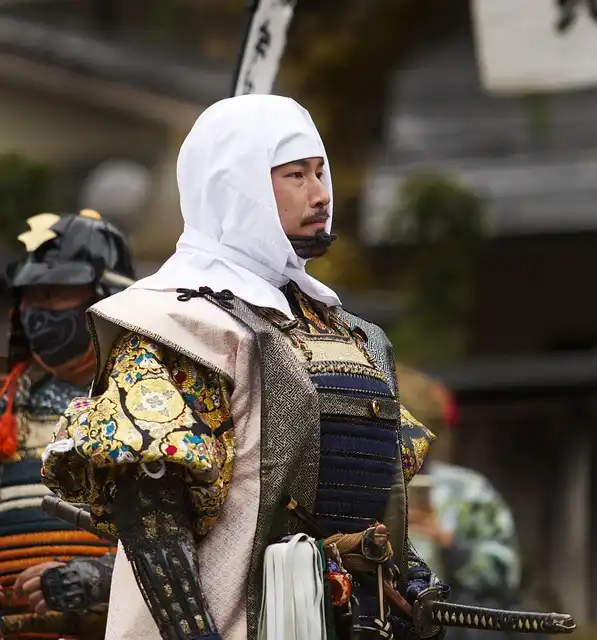Samurai Detectives: Edo Japan’s Secrets & Conflicts

Explore Edo Japan in 'Samurai Detectives'! A dive into honor, conflict, and complex characters in a changing world. Discover samurai codes, personal struggles, and thrilling action. A vital contribution to investigative genre.
Seeking something good? Cut through the sound with a meticulously curated option of the most recent releases, real-time occasions and exhibits, right to your inbox every fortnight, on Fridays. Register here.
Additionally referred to as the Tokugawa duration (1603-1868), the country was under the rule of the feudal Tokugawa shogunate. This was a time of peace and growing of the Japanese economy and arts, following 2 centuries of civil battle.
Tokugawa Shogunate: Peace and Growth
Hui-Ying Kerr formerly got funding from the AHRC (currently UKRI), for her doctorate in Background of Design (2010 – 2013) on Japan in the 1980s Bubble Economic climate, consisting of an AHRC-IPS grant for her fieldwork in Japan in 2012.
From a high-level daughter’s wish to end up being a warrior, in spite of the expectations positioned on her as a woman in Japanese society, to male samurai going after secret partnerships with male fans or adorning themselves with feminine make-up, guide has plenty of contradictions. It explores the stress between social standards and individual wishes.
This tension caps in guide’s explosive activity. Personalities relocate rapidly with transforming landscapes, cities, homes and modes of transport, moving from peaceful representation to significant occasions, producing a consistent sense of energy and motion.
Samurai Code vs. Personal Struggles
Rather than a simplistic, romantic representation of samurai, the tales are underpinned by the stress between the wider samurai code and the characters’ individual struggles. The influence of well-known filmmaker, Akira Kurosawa, understood for his duration samurai movies in the 1950s and 1960s that popularised the genre, consisting of Seven Samurai (1954 ), Throne of Blood (1957) and Yojimbo (1961 ), can not be overstated.
From swordfights in bamboo groves and ambushes in alleys to crimes of enthusiasm and national politics, the action comes suddenly, puncturing the special of Japanese connections. In these scenes you can see the influence of the drama of investigator fiction and Ikenami’s interest for theatre and his experience as a playwright. The influence of well-known filmmaker, Akira Kurosawa, known for his duration samurai films in the 1950s and 1960s that popularised the category, including Seven Samurai (1954 ), Throne of Blood (1957) and Yojimbo (1961 ), can not be overstated.
Morality and Bushido in a Changing World
Browsing unclear waters of morality in a changing globe of split inspirations and loyalties, bushido and honour are the only guides on which the samurai can depend– whatever the analysis. Greater than just a swashbuckling adventure via Edo, The Samurai Detectives is a vital payment to the investigative genre, utilizing the beauty of its globe and the battles of its personalities to supply insight right into Japan itself.
Throughout the book, Ikenami uses extensive backgrounds of areas, personalities and their allegiances, stressing the importance of comprehending the interconnected connections and motivations behind their actions. From clarifying the wider national politics of the feudal family members to the personal histories of the personalities, the book takes the viewers through the background and social location of Edo Japan. It attracts visitors right into the complicated globe of the samurai and their code, bushido.
Rather than a simplistic, romantic portrayal of samurai, the stories are underpinned by the tension between the bigger samurai code and the personalities’ individual struggles. They wrestle with how to straighten their very own desires with their duties and commitments. This adheres to the Japanese principle of honne-tatemae, or the stress between public behaviors and exclusive sensations.
The publication opens with Daijiro, a right-minded but poor young samurai. From clarifying the larger politics of the feudal households to the personal backgrounds of the characters, the book takes the visitor through the background and social geography of Edo Japan. It attracts visitors right into the complicated globe of the samurai and their code, bushido.
Ikenami’s publication was published at an appropriate time. Just as it muses on what to do with the leftover samurai and their skills in an era of peace, so 1970s Japan, following the turmoils of wartime loss, 1950s post-war and 1960s civil unrest, was grappling with what to do with their post-nationalist militarised culture and myriads of males.
The Samurai Detectives: An Introduction
An upright young samurai, a cross-dressing sword-wielding maiden, a retired warrior, honour murders, murders not-so-honourable, and fans of all kinds. Welcome to The Samurai Detectives, the initial part of a collection of popular historical secret books by Shōtarō Ikenami (1923-1990).
The book opens with Daijiro, a poor however right-minded young samurai. As he practices his craft alone in a vacant area under the open sky, he is provided a significant amount of gold– but at the price of his honour. Herein lies the crux of guide, where concept and dedication to the warrior code juts up against the temptations and usefulness of staying in Edo-era Japan.
Originally composed as a serialisation in the monthly magazine Shōsetsu Shinchō in between 1972 and 1989, the collection was published as 16 complete novels under the title, Kenkyaku Shōbai (Swordsman’s Service). Considered as one of Ikenami’s three trademark jobs, The Samurai Detectives is the initial English translation of his writing.
In the beginning, it’s simple to think that the handsome, upright, young Daijiro is the book’s hero, however as the story unfolds it ends up being clear that this is a classic situation of misdirection. Instead, various other a lot more complex personalities come forward– in particular, Daijiro’s even more pragmatic daddy. The poetics of the still landscape pave the way to the dynamism of a bustling Edo metropolis (the city that ended up being Tokyo) and effectiveness of dramatic– and sometimes graphically terrible– action.
1 bushido2 detective fiction
3 Edo Japan
4 historical mystery
5 Japanese culture
6 samurai
« Paul McCartney: Grief, Reconciliation, and John Lennon’s DeathDonald Sutherland Memoir Dispute: Penguin Random House Sues Production Company »
